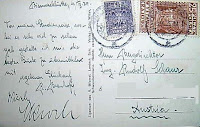The National Anthem of Upper Silesia (Oberschlesien)

Upper Silesia is the southeastern part of the historical and geographical region of Silesia; Lower Silesia is to the northwest. Since the 9th century, Upper Silesia has been part of (chronologically) Greater Moravia, Bohemia, Poland, Holy Roman Empire, Austria, Prussia, and later of unified German Reich. It is currently split between Poland (Opole and Silesian Voivodeships) and the Czech Republic (Czech Silesia, or the Silesian-Moravian Region).
Upper Silesia is situated in the Silesian highlands, between the upper Oder and upper Vistula rivers. The total population of the Upper Silesian Industry Area is 3,487,000. Opole Silesia, Cieszyn Silesia, and Austrian Silesia are historical parts of Upper Silesia. The territory of Opole Silesia composes much of Opole Voivodeship.
At the time of Svatopluk I and King Arnulf of Carinthia in the ninth century, Silesia was a part of Greater Moravia; after its destruction in the early tenth century, it was conquered by Bohemia. A number of earlier inhabitants of Silesia, the Silingi, remained in the region and they concentrated around the Zobten mountain and in a settlement named Niempsch (derived from a Slavic name for Germans).
Upper Silesia was soon conquered by the newly installed dukes of the Polans and for several hundred years was part of Poland.
This arrangement fell apart and, during the re-esta blishment of Poland under Casimir the Great, all of Silesia was specifically excluded as non-Polish land. In 1335 it came back under the rule of the Kingdom of Bohemia. Many towns were destroyed by the Mongols at the Battle of Legnica but were later rebuilt. By the 1300s, the influx of settlers into Upper Silesia stopped because of the plague. Latin, Czech and German language were used in the towns and cities and only in the 1550s (during the Protestant Reformation) did records with Polish names start to appear.
blishment of Poland under Casimir the Great, all of Silesia was specifically excluded as non-Polish land. In 1335 it came back under the rule of the Kingdom of Bohemia. Many towns were destroyed by the Mongols at the Battle of Legnica but were later rebuilt. By the 1300s, the influx of settlers into Upper Silesia stopped because of the plague. Latin, Czech and German language were used in the towns and cities and only in the 1550s (during the Protestant Reformation) did records with Polish names start to appear.
 blishment of Poland under Casimir the Great, all of Silesia was specifically excluded as non-Polish land. In 1335 it came back under the rule of the Kingdom of Bohemia. Many towns were destroyed by the Mongols at the Battle of Legnica but were later rebuilt. By the 1300s, the influx of settlers into Upper Silesia stopped because of the plague. Latin, Czech and German language were used in the towns and cities and only in the 1550s (during the Protestant Reformation) did records with Polish names start to appear.
blishment of Poland under Casimir the Great, all of Silesia was specifically excluded as non-Polish land. In 1335 it came back under the rule of the Kingdom of Bohemia. Many towns were destroyed by the Mongols at the Battle of Legnica but were later rebuilt. By the 1300s, the influx of settlers into Upper Silesia stopped because of the plague. Latin, Czech and German language were used in the towns and cities and only in the 1550s (during the Protestant Reformation) did records with Polish names start to appear. The Roman Catholic Holy Roman Emperors of the Habsburg dynasty forcibly reintroduced Catholicism, led by the Jesuits.
Lower Silesia and most of Upper Silesia became part of the Kingdom of Prussia in 1742 during the First Silesian War. A small part remained within the Habsburg-ruled Bohemian Crown as the Duchy of Upper and Lower Silesia, colloquially called Austrian Silesia. In the 19th century, Upper Silesia became an industrial area taking advantage of its plentiful coal and iron ore.
In 1919, after World War I, the eastern part (with a majority of ethnic Poles) came under Polish rule as the Autonomous Silesian Voivodeship, while the mostly German-speaking western part remained part of the German Reich as the Province of Upper Silesia.
From 1919-1921 three Silesian Uprisings occurred among the Polish-speaking populace of Upper Silesia; the Battle of Annaberg was fought in the region in 1921. In the Upper Silesia plebiscite, a majority of 60% voted against merging with Poland, with clear lines dividing Polish and German communities. The exact border, the maintenance of cross-border railway traffic and other necessary co-operations, as well as equal rights for all inhabitants in both parts of Upper Silesia, were all fixed by the German-Polish Accord on East Silesia, signed in Geneva on May 15, 1922. On June 20, Germany ceded, de facto, the eastern parts of Upper Silesia, becoming part of the Autonomous Silesian Voivodeship of Poland.
After 1945, almost all of Upper Silesia that was not ceded to Poland in 1922 was transferred to this state.
A majority of the German-speaking population was expelled in accordance with the decision of the victorious Allied powers at their 1945 meeting at Potsdam. This expulsion program also included German speaking inhabitants of Lower Silesia, eastern Pomerania, Gdańsk (Danzig), and East Prussia. These German expellees were transported to the present day Germany (including the former East Germany), and they were replaced with Poles, many from former Polish provinces taken over by the USSR in the east.
A good many German-speaking Upper Silesians were relocated in Bavaria. A small part of Upper Silesia stayed as part of Czechoslovakia as Czech Silesia.
The expulsions of German-speakers did not totally eliminate the presence of a population that considered itself German. Upper Silesia, in 1945, had a considerable number of Roman Catholic mixed bilingual inhabitants that spoke both German and Polish dialects, and their Polish linguistic skills were solid enough for them to be allowed to remain in the area. With the fall of communism and Poland joining the European Union, there were enough of these remaining in Upper Silesia to allow for the recognition of a German minority by the Polish government.
The postcard above features the cartooned score of the anthem of Upper Silesia. Below is the back of the postal card with stamps.






